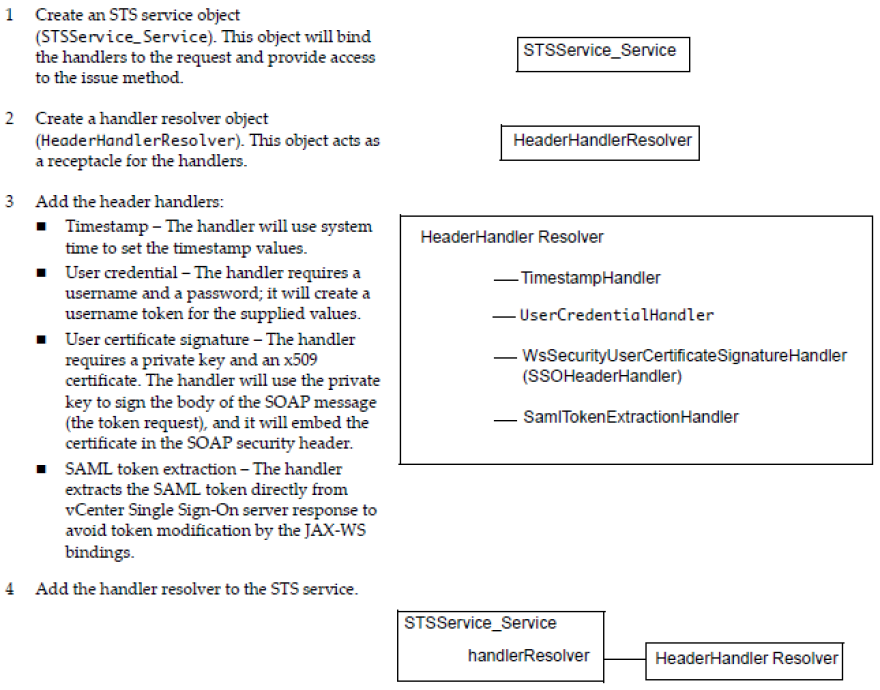The VMware vCenter Single Sign-On SDK provides sample code that is an extension of the JAX-WS XML Web services message handler (javax.xml.ws.handler). The sample code consists of a set of SOAP header handler methods and a header handler resolver, to which you add the handler methods. The handler methods insert timestamp, user credential, and message signature data into the SOAP security header for the request. A handler method extracts the SAML token from the vCenter Single Sign-On server response.
The VMware vCenter Single Sign-On client SOAP header handler files are located in the soaphandlers directory:
Example: Acquiring a vCenter Single Sign-On Token – Soap Handlers creates a handler resolver and adds the handler methods to the handler resolver. After the handlers have been established, the client creates a token request and calls the Issue method. See Sending a Request for a Security Token.
